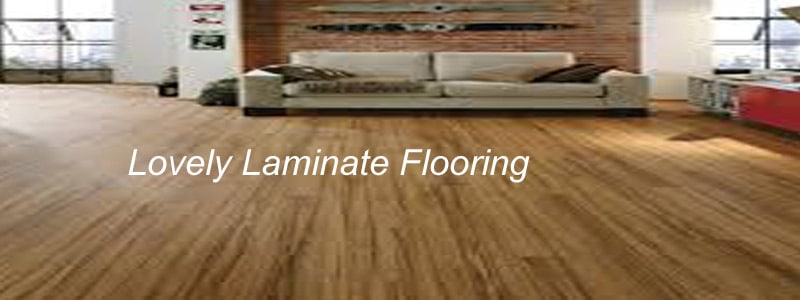| Laminate flooring is a viable solution for using in new construction or in renovations. Floating floors with real wood surfaces, or wood, stone or tile patterns, have benefits not found in other flooring products. |
As a verb it means to bond together in layers, while as a noun, it refers to a material that is produced by bonding together layers of material. For flooring, “laminate” is a family of products in which a finish material is fused to a substrate. Laminates can resemble many things, including wood, stone (like marble, slate, or flagstone), tile, or a solid surface of color (though that’s usually saved for countertops).
You may be wondering why you would choose a laminate over a wood, tile or stone floor. There are lots of reasons!
- Cost.
- Environmental concerns.
- Health issues.
- Speed of installation.
There are some reasons to not choose a laminate floor too.
- Durability.
- Maintenance.
- Noise.
Before we delve into the pros and cons, let’s understand better what laminate flooring is and a quick review of its history.
Laminate flooring is typically made with an interlocking tongue-and-groove system that sometimes clicks together and sometimes glues together. It can be pre-finished at the factory or finished after installation. It can be installed on any surface and in any room of your house, including wet rooms like the kitchen and bath. Laminate flooring consists of four main laminated components. First, the decorative surface — wood grain or stone look — made of resin is based melamine or a thin slice of wood. In the middle is a moisture-, heat- and dent-resistant core. On the underside is a balanced backing that adds support. The top is a clear, wear-resistant finish, often of aluminum oxide, which provides the protection and stain resistance.
Laminate flooring has a hardness factor, assigned by independent testing labs, reported on an AC scale. The AC rating considers resistance to staining and cigarette burns, impact, abrasion, and thickness swelling along plank edges. You want either AC-3 or AC-4; AC-3 is made for heavy residential and light commercial use. AC-4, which is 60% heavier than AC-3, is rated for heavier commercial use but is also fine in homes.
Pergo, a Swedish flooring company, developed the idea of a laminate floor out of their laminate countertop business, in 1977, introduced it to Europe in 1984 where it has grown in popularity ever since. It was introduced in 1994 to the U.S. where it spread quickly. Now there are numerous companies manufacturing laminate flooring, though Pergo has become the household word for the product.
Durability is one reason to not choose a laminate floor. Laminate flooring is tough, but by its nature of being made of thin layers it’s not as durable as wood, tile or stone flooring. It can’t be refinished when it gets scratched and the scratches can’t be easily camouflaged. When a laminate plank is damaged it’s challenging to repair it, though with the repair kits you can get from the manufacturer it can be patched. In some cases, you can take the floor up and replace the damaged plank.
The cost of installed laminate flooring can be cheaper than wood floors, making it one good reason to consider. Speed of installation from start to finish is faster than wood floors. It’s because it comes pre-finished, removing the additional step of coating the surface with a protective seal, and because it isn’t nailed down. It can be noisy to walk on, sounding a bit hollow.
Environmental concerns are worth evaluating as well. Trees, though a renewable resource, are very slow growing, and using them for floors consumes quite a bit of natural resource. Laminate floors, on the other hand, use manufactured materials (often from scraps of wood, cardboard, or paper) which are more abundant, being gentler on the environment.
Health issues are still another consideration in purchasing laminate flooring. Some laminate floors are off-gassed at the factory, saving your home or office from the health-challenging fumes. The quality of laminate flooring varies, along with the contents. Some products are made with more urea-formaldehyde and high volatile organic compounds (VOC) ingredients while others are made with low VOC ingredients. If the off-gassing is handled at the factory, you are in better shape.
Is laminate for you? I enjoyed my laminate flooring, laid in the entry, kitchen, and bathroom. The present owner of that house says the floor looks great more than 11 years later, even after being subjected to men wearing hiking boots, to dogs racing through the house, and all kinds of weather conditions, showing that it can definitely be a durable surface despite its reputation as being fragile.

Dear Sir or Madam, if a laminate floor has a high VOC what are some effects, and how will you know if the product you brought has a high VOC? Thank you.
Greg March